Topology Optimization Based Parametric Design of Balloon Borne Telescope’s Primary Mirror
Abstract
:1. Introduction
2. Optimization Design of the Primary Mirror
2.1. Optical System
2.2. Initial Model Design of Primary Design
2.3. Topology Optimization of Primary Mirror
3. Parametric Design of Primary Mirror
3.1. Theory of Compromise Programming Method
3.2. Sensitivity Analysis of Primary Mirror Parameters
3.3. Parametric Design of Primary Mirror
4. Conclusions
Author Contributions
Funding
Institutional Review Board Statement
Informed Consent Statement
Data Availability Statement
Conflicts of Interest
References
- Stephens, H. Near-space. Air Force Mag. 2005, 88, 36–40. [Google Scholar]
- Allen, E.H. The case for near space. J. Aerospace Am. 2006, 44, 31–34. [Google Scholar]
- Pascale, E.; Ade, P.A.; Bock, J.J.; Chapin, E.L.; Chung, J.; Devlin, M.J.; Dicker, S.; Griffin, M.; Gundersen, J.O.; Wiebe, D.V. The balloon-borne large aperture submillimeter telescope: BLAST. Astrophys. J. 2008, 681, 400–414. [Google Scholar] [CrossRef] [Green Version]
- Hargrave, P.C.; Ade, P.A.R.; Bock, J.J.; Chapin, E.L.; Chung, J.; Devlin, M.J.; Dicker, S.; Griffin, M.; Gundersen, J.O.; Halpern, M.; et al. BLAST—The Balloon-borne Large Aperture Sub-millimeter Telescope. In Proceedings of the 2007 Joint 32nd International Conference on Infrared and Millimeter Waves and the 15th International Conference on Terahertz Electronics, Cardiff, UK, 2–9 September 2007; Institute of Electrical and Electronics Engineers (IEEE): Los Alamitos, CA, USA, 2007; pp. 596–597. [Google Scholar]
- Walker, C.; Kulesa, C.; Bernasconi, P.; Eaton, H.; Rolander, N.; Groppi, C.; Kloosterman, J.; Cottam, T.; Lesser, D.; Wolfire, M.; et al. The Stratospheric THz Observatory (STO). Proc. SPIE Int. Soc. Opt. Eng. 2010, 7733, 54–58. [Google Scholar]
- Solanki, S.K.; Riethmüller, T.L.; Barthol, P.; Danilovic, S.; Deutsch, W.; Doerr, H.P.; Feller, A.; Gandorfer, A.; Germerott, D.; Lecinski, A.; et al. The second flight of the SUNRISE balloon-borne solar observatory: Overview of instrument updates, the flight, the data, and first results. Astrophys. J. Suppl. Ser. 2017, 229, 2. [Google Scholar] [CrossRef] [Green Version]
- Nakano, T.; Sakamoto, Y.; Yoshida, K.; Kuwahara, T.; Shoji, Y.; Taguchi, M.; Yamamoto, M.; Takahashi, Y. The balloon-borne telescope system for optical observation of planets. 2010 IEEE/SICE Int. Symp. Syst. Integr. 2010, 236–241. [Google Scholar] [CrossRef]
- Barthol, P.; Gandorfer, A.; Solanki, S.K.; Schüssler, M.; Chares, B.; Curdt, W.; Deutsch, W.; Feller, A.; Germerott, D.; Schmidt, E.; et al. The Sunrise Mission. Sol. Phys. 2011, 268, 1–34. [Google Scholar] [CrossRef] [Green Version]
- Catanzaro, B.; Brooks, T.; Johnson, W.; O’Connor, B.; Woodruff, R.; Edwards, R.; Racine, E.; Paganini, L.; Eliot, Y.; Gorius, N.; et al. “STOP modeling in support of 1-meter aperture balloon based telescope.” Astronomical Telescopes and Instrumentation. Austin: SPIE. 2018. Available online: https://www.spiedigitallibrary.org/conference-proceedings-of-spie/10705/2312312/STOP-modeling-in-support-of-a-1-meter-aperture-balloon/10.1117/12.2312312.full (accessed on 27 May 2021).
- Lee, J.H.; Park, K.-S.; Youn, S.-K. Lightweight mirror design method using topology optimization. Opt. Eng. 2005, 44, 053002. [Google Scholar] [CrossRef]
- Hu, R.; Liu, S.; Li, Q. Topology-optimization-based design method of flexures for mounting the primary mirror of a large-aperture space telescope. Appl. Opt. 2017, 56, 4551. [Google Scholar] [CrossRef] [PubMed]
- Qu, Y.; Jiang, Y.; Feng, L.; Li, X.; Liu, B.; Wang, W. Lightweight Design of Multi-Objective Topology for a Large-Aperture Space Mirror. Appl. Sci. 2018, 8, 2259. [Google Scholar] [CrossRef] [Green Version]
- Li, Z.; Chen, X.; Wang, S.; Jin, G. Optimal design of a Φ760 mm lightweight SiC mirror and the flexural mount for a space telescope. Rev. Sci. Instrum. 2017, 88, 125107. [Google Scholar] [CrossRef]
- Liu, G.; Guo, L.; Wang, X.; Wu, Q. Topology and parametric optimization based lightweight design of a space reflective mirror. Opt. Eng. 2018, 57, 075101. [Google Scholar] [CrossRef]
- Jiang, P.; Zhou, P. Optimization of a lightweight mirror with reduced sensitivity to the mount location. Appl. Opt. 2020, 59, 3799–3805. [Google Scholar] [CrossRef]
- Xiao, D.; Zhang, H.; Liu, X.; He, T.; Shan, Y. Novel steel wheel design based on multi-objective topology optimization. J. Mech. Sci. Technol. 2014, 28, 1007–1016. [Google Scholar] [CrossRef]
- Qiao, J.; Xu, F.; Wu, K.; Zhang, S.; Liu, Y. Multi-Objective Topological Optimization of an Electric Truck Frame Based on Orthogonal Design and Analytic Hierarchy Process. IEEE Access 2020, 8, 140923–140935. [Google Scholar] [CrossRef]
- Meng, Q.; He, F.; Zhao, W.; Wang, K.; Yang, L.; Dong, J.; Wang, X. The Overview of the Planetary Atmospheric Spectral Telescope (PAST) in the Scientific Experimental System in Near-Space (SENSE). ISPRS Int. Arch. Photogramm. Remote Sens. Spat. Inf. Sci. 2019, XLII-2/W13, 1419–1423. [Google Scholar] [CrossRef] [Green Version]
- Zhou, P.; Zhang, D.; Liu, G.; Yan, C. Development of space active optics for a whiffletree supported mirror. Appl. Opt. 2019, 58, 5740–5747. [Google Scholar] [CrossRef] [PubMed]
- Yoder, P.R. Opto-Mechanical Systems Design, 3rd ed.; CRC Press: Boca Raton, FL, USA, 2006; pp. 503–506. [Google Scholar]
- Tcherniak, D. Topology optimization of resonating structures using SIMP method. Int. J. Numer. Methods Eng. 2002, 54, 1605–1622. [Google Scholar] [CrossRef]
- Buhl, T. Simultaneous topology optimization of structure and supports. Struct. Multidiscip. Optim. 2002, 23, 336–346. [Google Scholar] [CrossRef]
- Ortigosa, R.; Ruiz, D.; Gil, A.; Donoso, A.; Bellido, J. A stabilisation approach for topology optimisation of hyperelastic structures with the SIMP method. Comput. Methods Appl. Mech. Eng. 2020, 364, 112924. [Google Scholar] [CrossRef]
- Kihm, H.; Yang, H.-S. Design optimization of a 1-m lightweight mirror for a space telescope. Opt. Eng. 2013, 52, 091806. [Google Scholar] [CrossRef]
- Hu, J.N.; Dong, J.H.; Zhou, P.W. Parametric design of flexure supporting for optical space remote sensor primary mirror. Acta Opt. Sin. 2016, 36, 297–304. [Google Scholar]
- Iqbal, T.; Wang, L.; Li, D.; Dong, E.; Fan, H.; Fu, J.; Hu, C. A general multi-objective topology optimization methodology developed for customized design of pelvic prostheses. Med. Eng. Phys. 2019, 69, 8–16. [Google Scholar] [CrossRef] [PubMed]
- Teimouri, M.; Asgari, M. ‘Multi-objective BESO topology optimization for stiffness and frequency of continuum structures. Struct. Eng. Mech. 2019, 72, 181–190. [Google Scholar]
- Liu, C.; Zhu, H.; Dong, R.; Zhou, S.; Huang, L. Sensitivity Analysis and Optimal Design of a Linear Magnetic Gear for Direct-Drive Wave Energy Conversion. IEEE Access 2019, 7, 73983–73992. [Google Scholar] [CrossRef]
- Nurunnabi, M.; Roy, N.K.; Hossain, E.; Pota, H.R. Size Optimization and Sensitivity Analysis of Hybrid Wind/PV Micro-Grids- A Case Study for Bangladesh. IEEE Access 2019, 7, 150120–150140. [Google Scholar] [CrossRef]
- Sin, G.; Gernaey, K.V. Improving the Morris method for sensitivity analysis by scaling the elementary effects. Comput. Aided Chem. Eng. 2009, 26, 925–930. [Google Scholar] [CrossRef]
- Li, Y.; Liu, W.; Zhang, X.; Yan, C.; Gu, Z. Optimized design of high-mode main support structure for airborne spectrometer. Opt. Precis. Eng. 2019, 27, 1783–1792. [Google Scholar] [CrossRef]
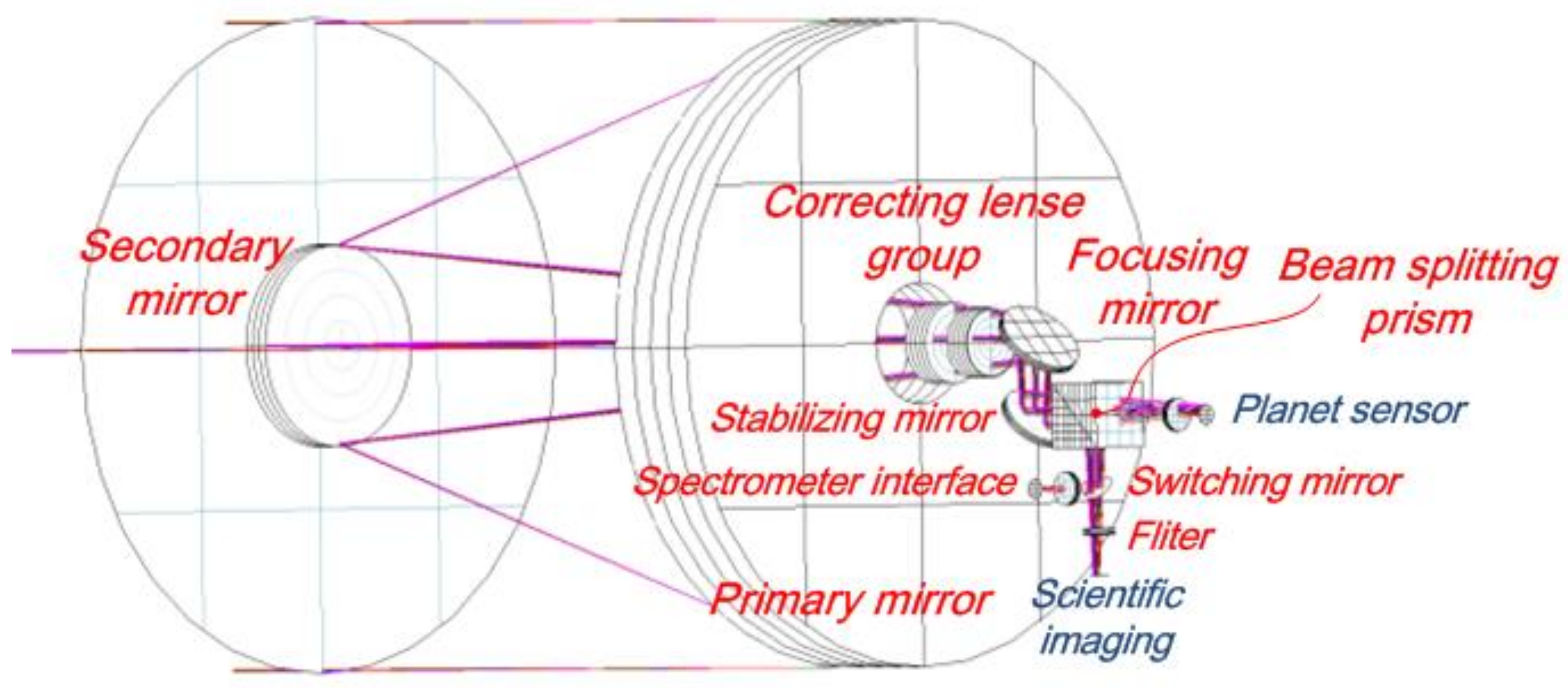
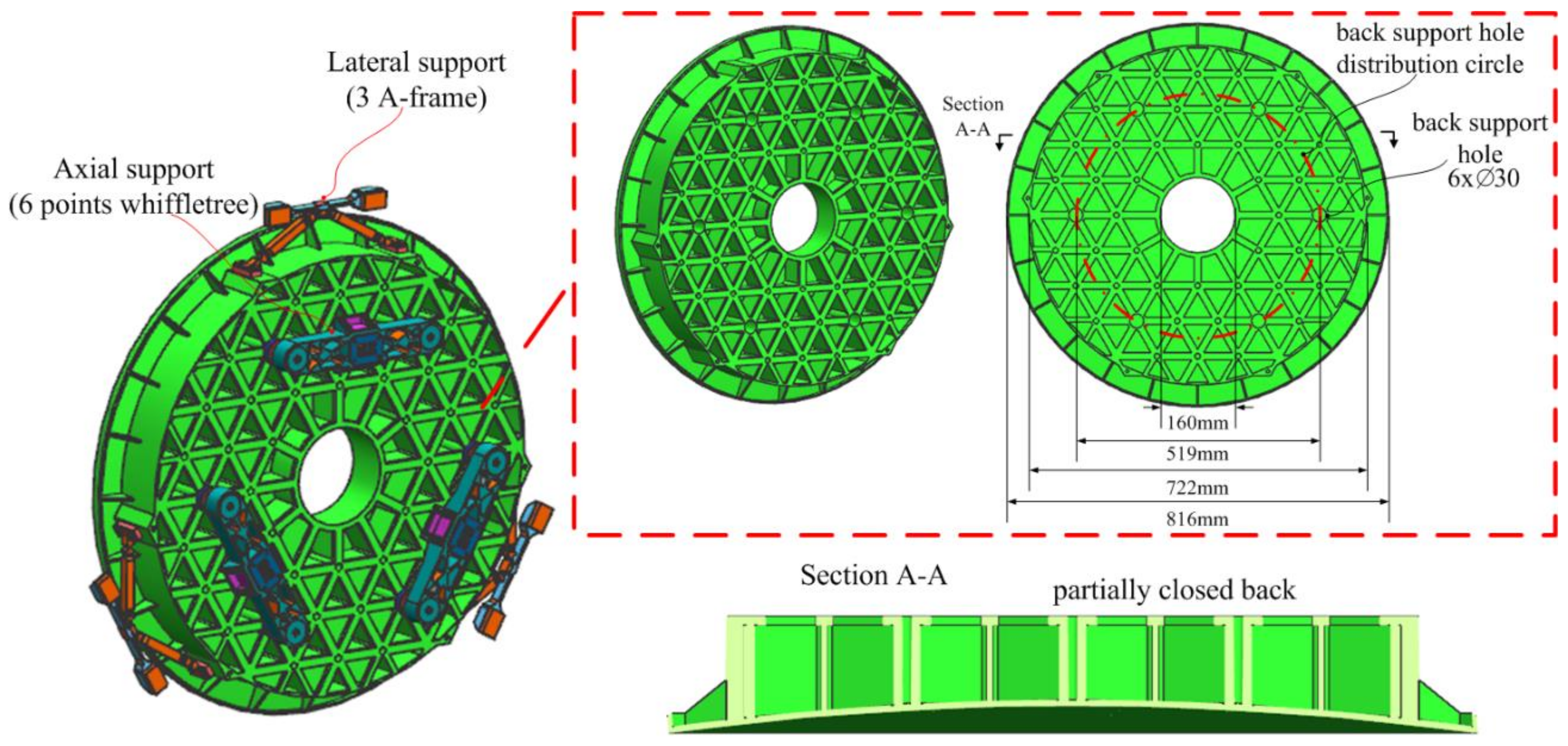
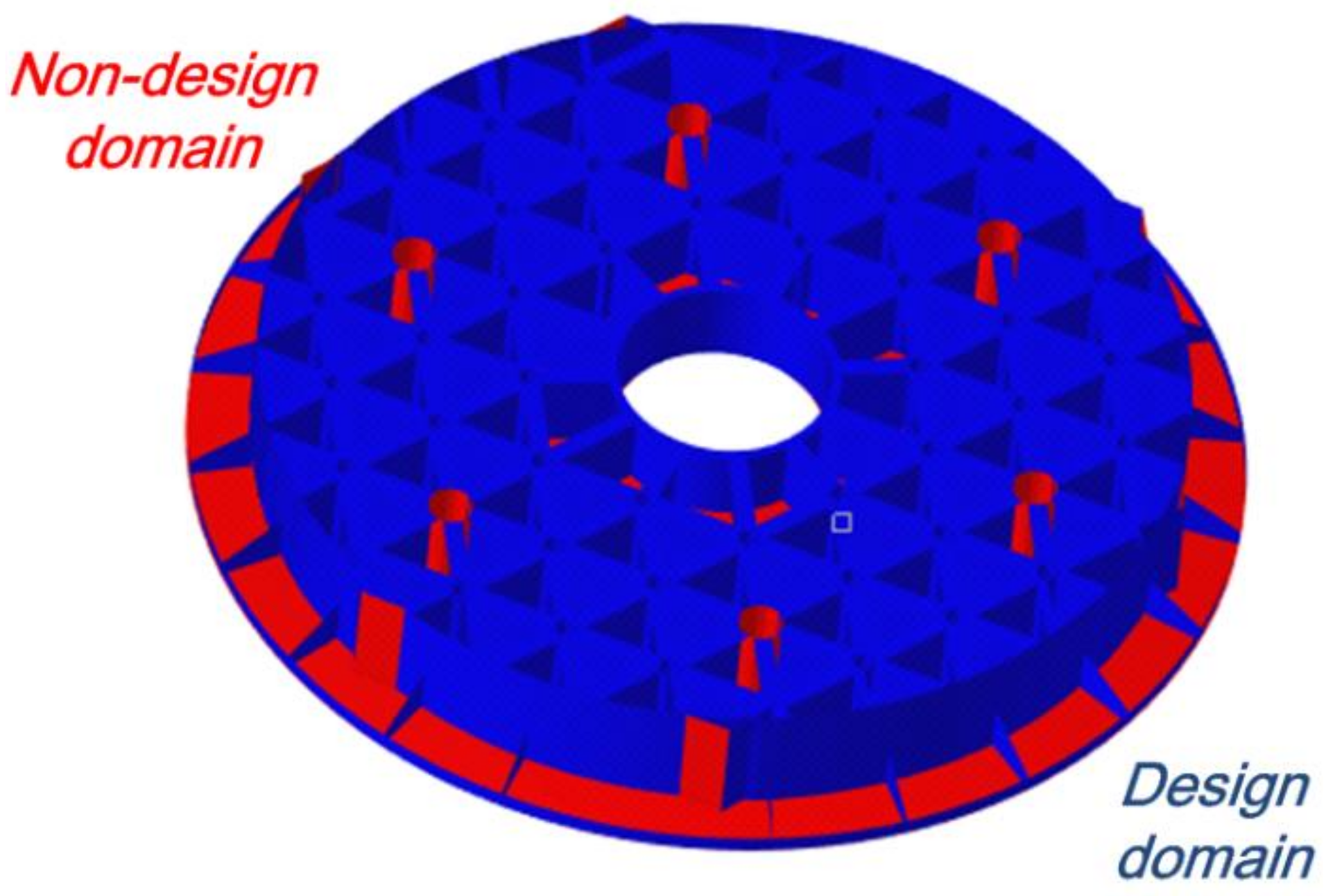


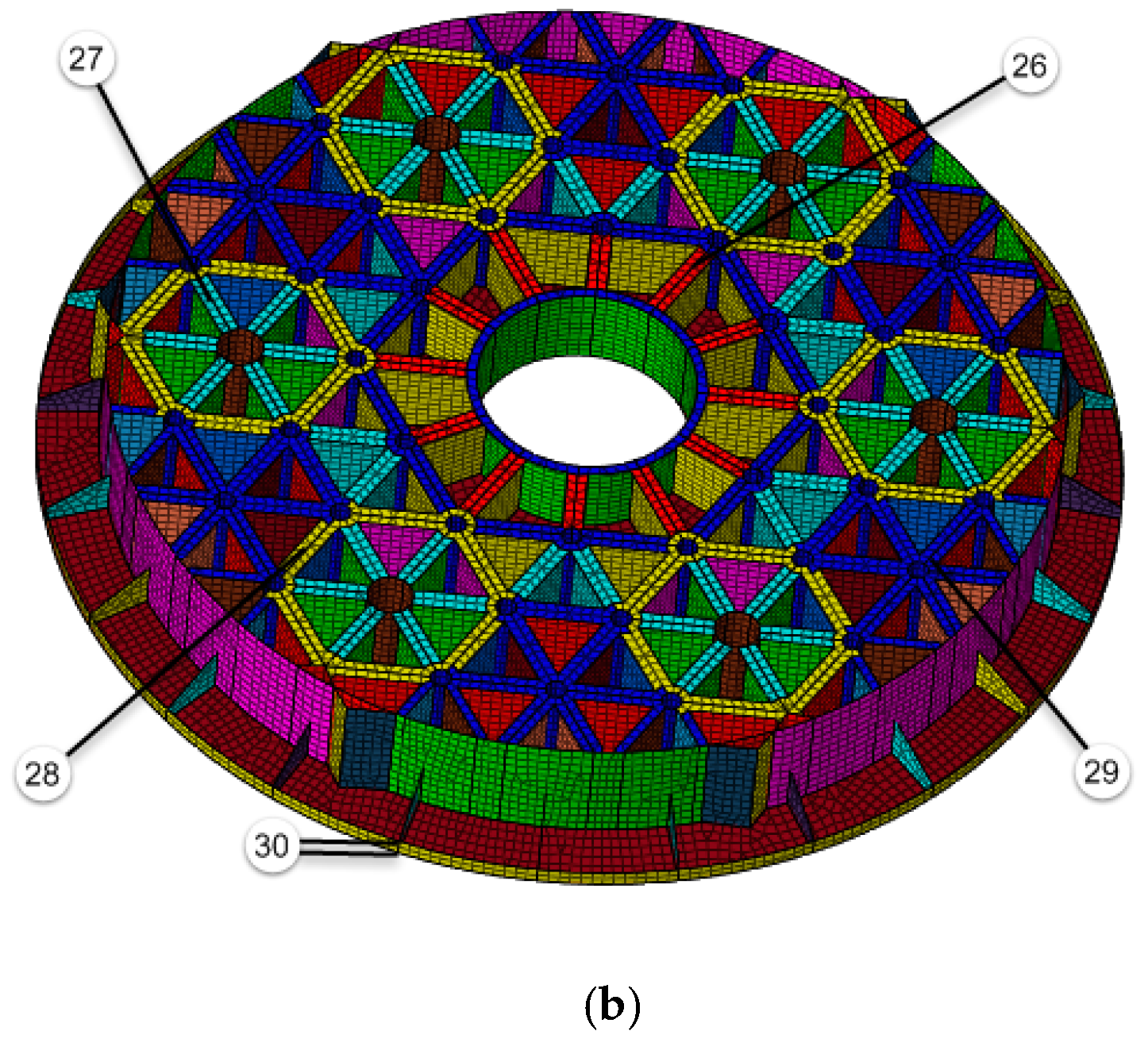
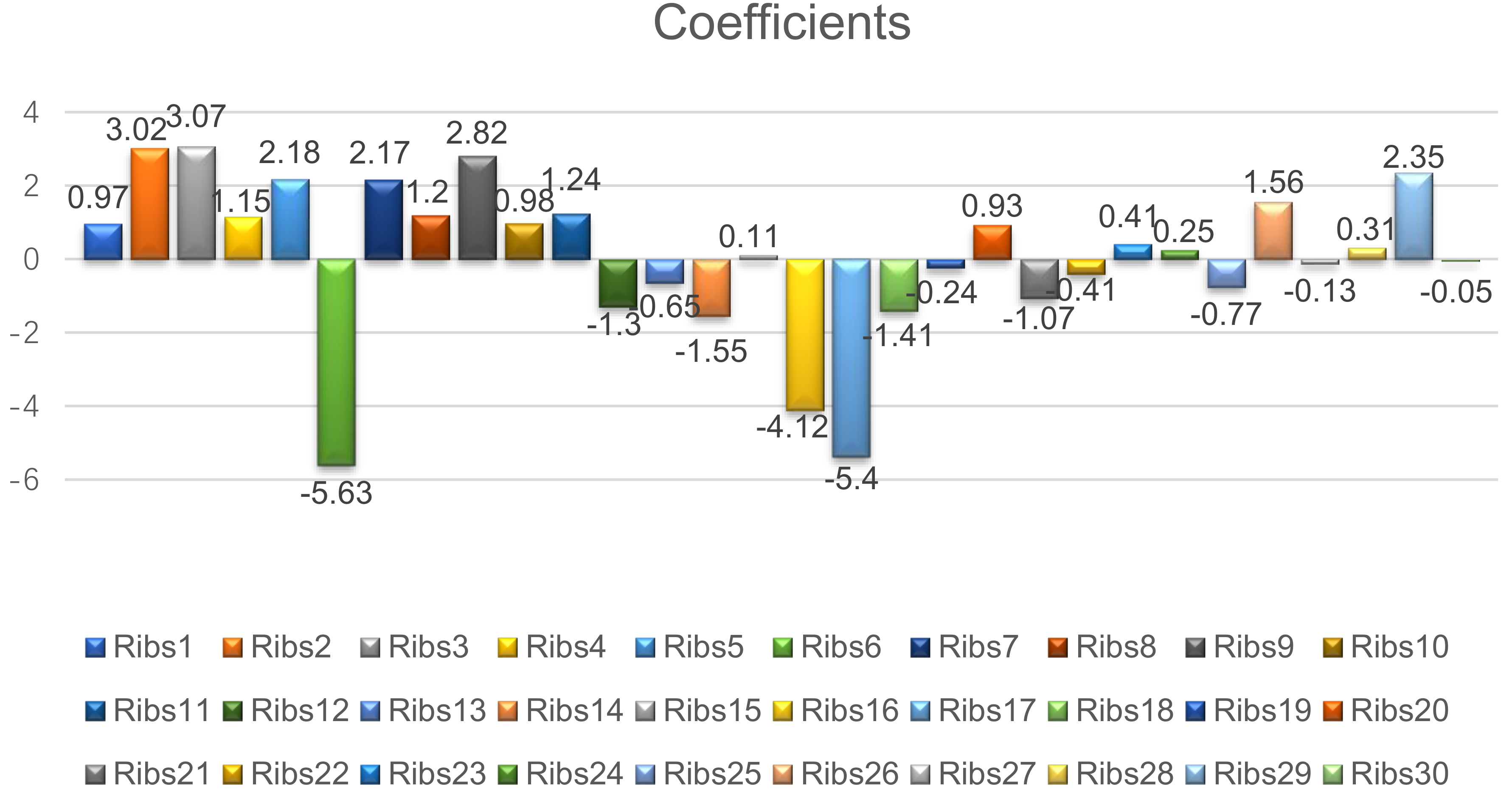

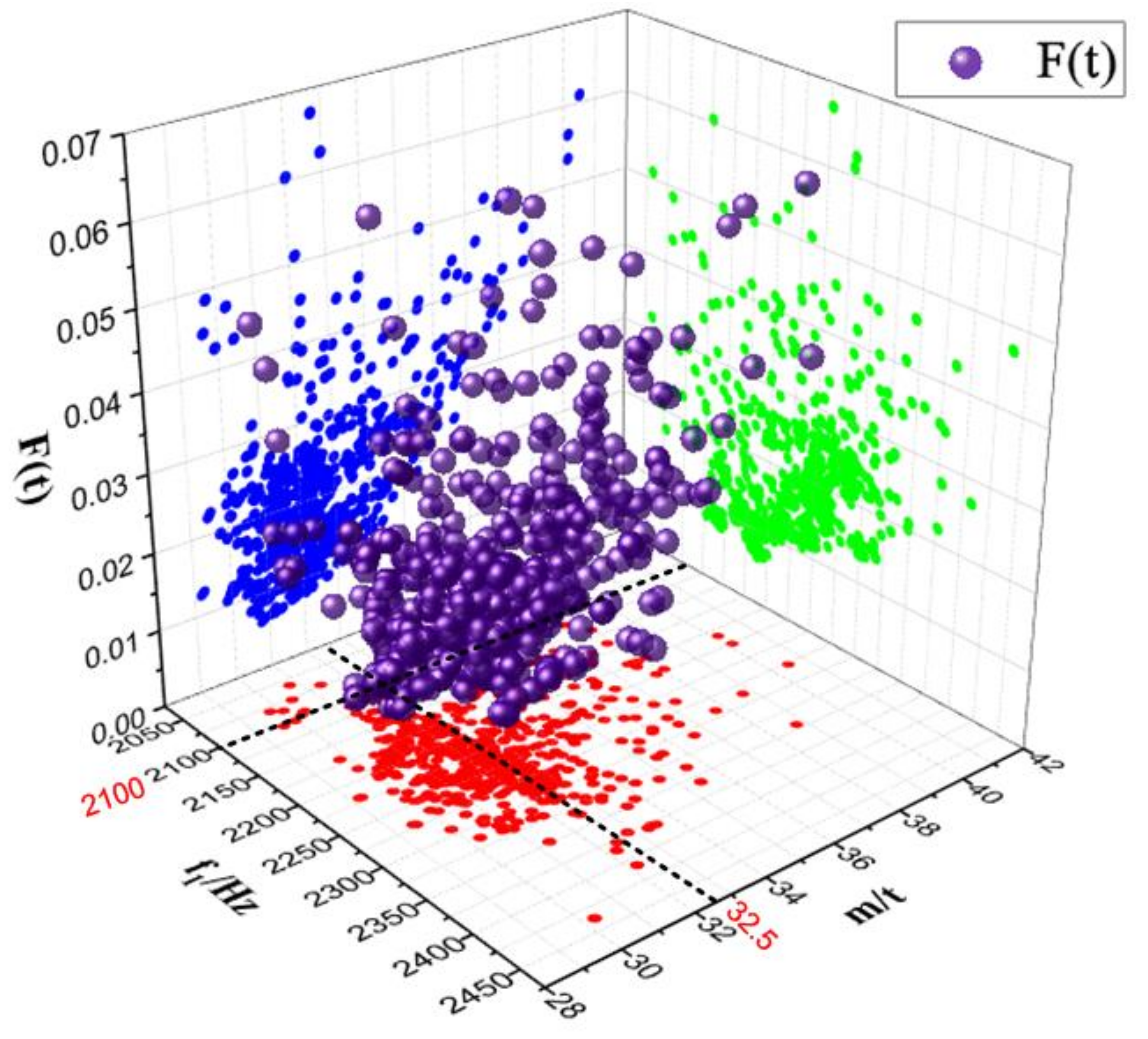
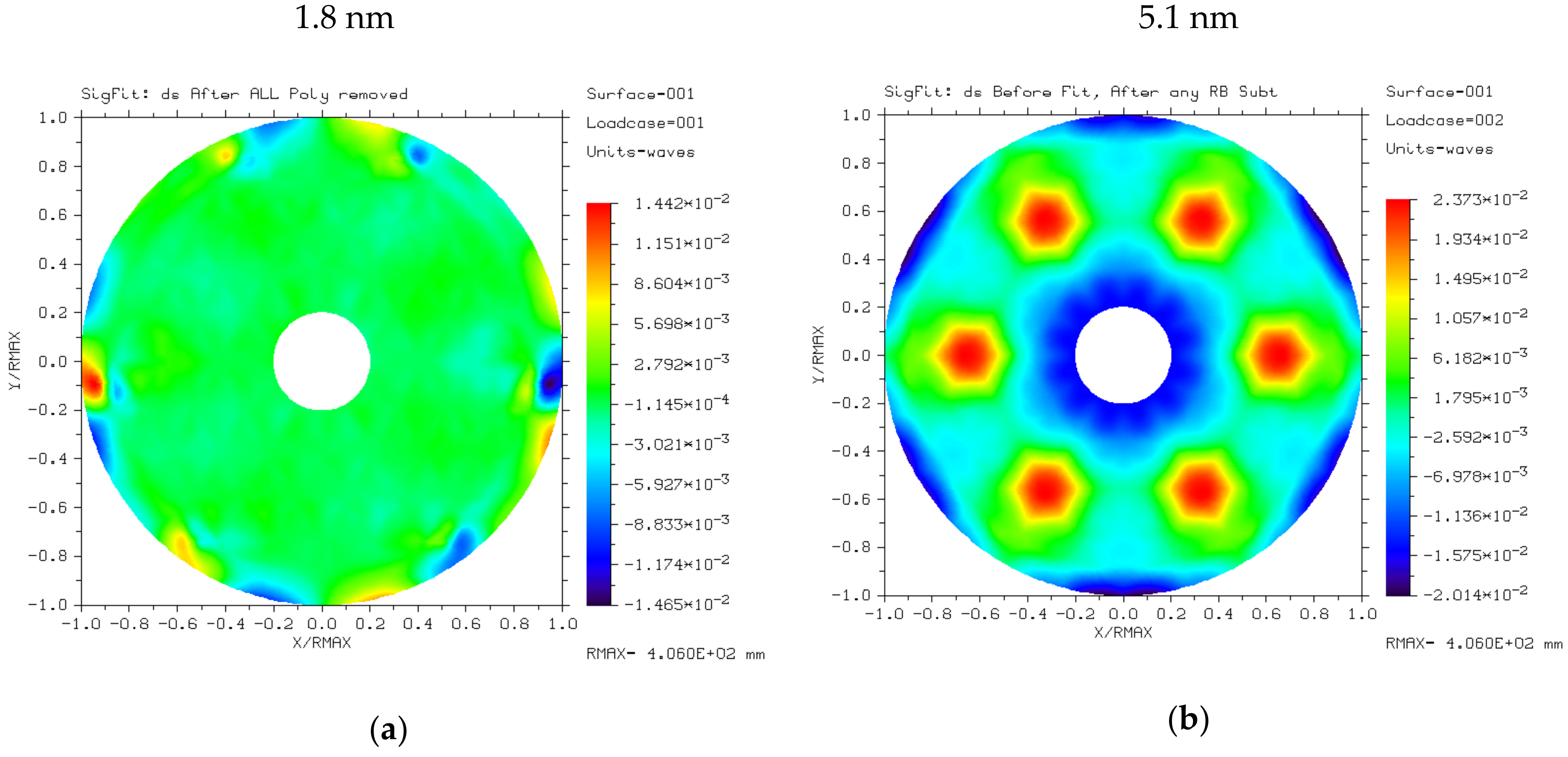
| Material | E (Gpa) | ρ (10−9 t/mm3) | μ |
|---|---|---|---|
| RB-SiC | 330 | 3.05 | 0.25 |
| Primary Mirror | RMSx (nm) | RMSz (nm) | M (kg) | f1 (Hz) |
|---|---|---|---|---|
| Index | ≤λ/60 | ≤λ/60 | ≤32.5 | ≥2100 |
| Design Variables | Domains (mm) | Initial Value (mm) | Optimum Value (mm) |
|---|---|---|---|
| ribs1 | [3, 8] | 5 | 6.4 |
| ribs2 | [3, 8] | 5 | 3.0 |
| ribs3 | [3, 8] | 5 | 3.2 |
| ribs4 | [3, 8] | 5 | 3.3 |
| ribs5 | [3, 8] | 5 | 7.4 |
| ribs6 | [3, 8] | 5 | 4.8 |
| ribs7 | [3, 8] | 5 | 3.4 |
| ribs8 | [3, 8] | 5 | 3.3 |
| ribs9 | [3, 8] | 5 | 3.6 |
| ribs10 | [3, 8] | 5 | 4.9 |
| ribs11 | [3, 8] | 5 | 3.1 |
| ribs12 | [3, 8] | 5 | 7.2 |
| ribs13 | [3, 8] | 5 | 8.0 |
| ribs14 | [3, 8] | 5 | 4.6 |
| ribs16 | [3, 8] | 5 | 6.9 |
| ribs17 | [3, 8] | 5 | 8.0 |
| ribs18 | [3, 8] | 5 | 6.8 |
| ribs20 | [3, 8] | 5 | 4.0 |
| ribs21 | [3, 8] | 5 | 5.2 |
| ribs25 | [3, 8] | 6 | 4.5 |
| ribs26 | [6, 10] | 8 | 7.7 |
| ribs29 | [6, 10] | 8 | 6.1 |
| Response | F(t) | RMSx (nm) | RMSz (nm) | M (kg) | f1 (Hz) |
|---|---|---|---|---|---|
| Initial | 0.0218 | 2.1 | 5.7 | 33.8 | 2228.2 |
| Optimization | 0.00632 | 1.8 | 5.1 | 30.9 | 2188.2 |
| Deign difference | −71% | −14.3% | −10.5% | −8.5% | −1.8% |
Publisher’s Note: MDPI stays neutral with regard to jurisdictional claims in published maps and institutional affiliations. |
© 2021 by the authors. Licensee MDPI, Basel, Switzerland. This article is an open access article distributed under the terms and conditions of the Creative Commons Attribution (CC BY) license (https://creativecommons.org/licenses/by/4.0/).
Share and Cite
Liu, F.; Li, W.; Zhao, W.; Zhao, H.; Lin, G.; Wang, X. Topology Optimization Based Parametric Design of Balloon Borne Telescope’s Primary Mirror. Appl. Sci. 2021, 11, 5077. https://doi.org/10.3390/app11115077
Liu F, Li W, Zhao W, Zhao H, Lin G, Wang X. Topology Optimization Based Parametric Design of Balloon Borne Telescope’s Primary Mirror. Applied Sciences. 2021; 11(11):5077. https://doi.org/10.3390/app11115077
Chicago/Turabian StyleLiu, Fengchang, Wei Li, Weiguo Zhao, Haibo Zhao, Guanyu Lin, and Xiaodong Wang. 2021. "Topology Optimization Based Parametric Design of Balloon Borne Telescope’s Primary Mirror" Applied Sciences 11, no. 11: 5077. https://doi.org/10.3390/app11115077





